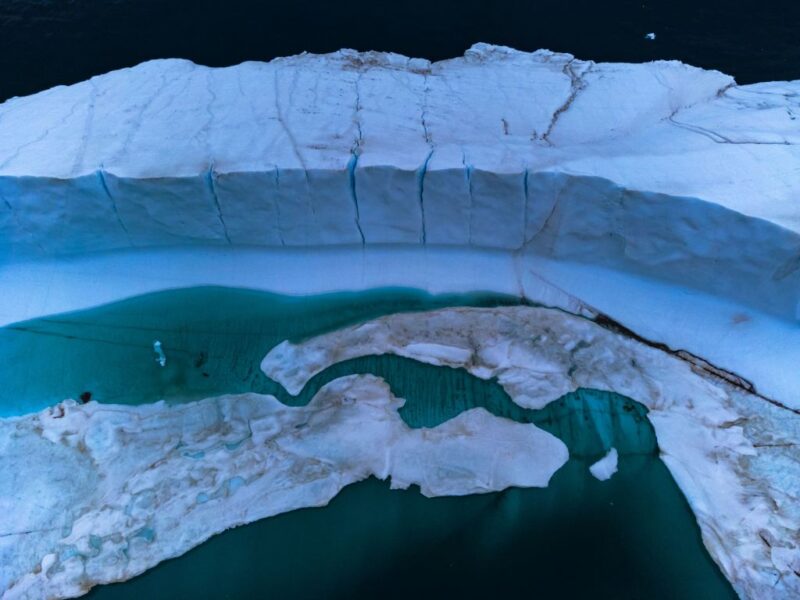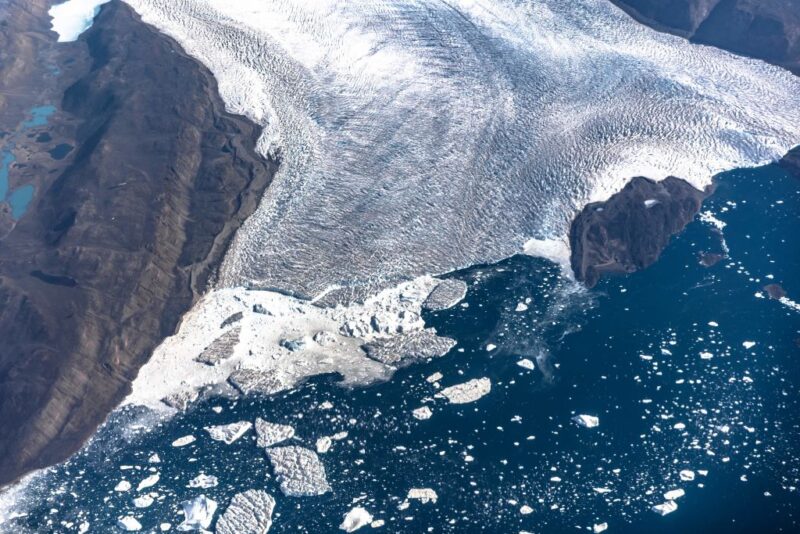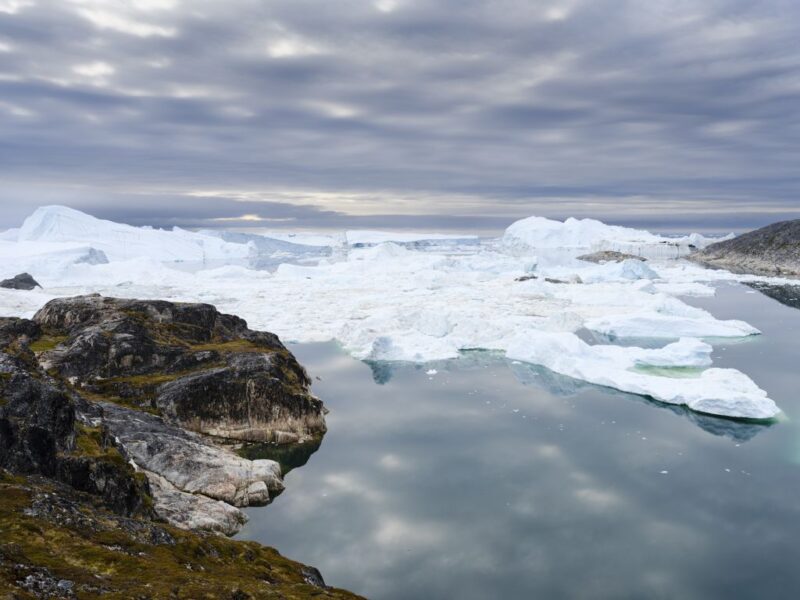Greenland’s Ice Sheet Is Melting Faster Than Previously Thought
Greenland is home to some of the largest glaciers in the world – and they’re melting faster than scientists initially thought. In a study published to the journal Proceedings of the National Academy of Scientists, a team of glaciologists from the University of California, Irvine and NASA‘s Jet Propulsion Laboratory revealed some concerning insight into one of the country’s largest and most well-known ones: Petermann Glacier.

Published on May 8, 2023, Melt rates in the kilometer-size grounding zone of Petermann Glacier reveals that the grounding sheet that extends across the 10-mile-wide piece of ice is moving as the tide roll in and out. According to lead author Enrico Circacì, a scientist at UCI, it’s moving “between 2 and 6 kilometers (1.2 to 3.7 miles) as tides come in and out.”
The team discovered this by analyzing satellite data from three European missions. As the 10-mile-wide glacier shifts, it allows warm sea water to strike and melt the ice at an accelerated rate. Between 2016-22, this caused a 670-foot-tall hole to melt into the underside of the Petermann Glacier, along its grounding line.
This is made even more concerning by the fact that, in 2010 and ’12, the glacier lost two large chunks of ice, amounting to a third of its size, from its floating ice shelf. It still hasn’t recovered.

Previously, scientists believed that grounding lines didn’t migrate with the tide. Now that they’ve learnt they can, there’s concern this could become an additional source of melting that will inevitably accelerate the rate at which sea levels are rising.
For the Petermann Glacier and its neighbors, in particular, this could be made worse by the fact they’re grounded below sea level. According to NASA, Greenland is already the single largest contributor to rising sea levels – and that was before these findings were known.
“These ice-ocean interactions make the glaciers more sensitive to ocean warming,” Eric Rignot, co-author of the study and a professor at UCI, said in a statement. “These dynamics are not included in models, and if we were to include them, it would increase projections of sea level rise by up to 200 percent – not just for Petermann, but for all glaciers ending in the ocean, which is most of northern Greenland and all of Antarctica.”

Speaking with The Washington Post, Andreas Muenchow, a glaciologist at the University of Delaware who wasn’t involved in the study, said, “My main takeaway is that models need to be improved. The study provides a sharper focus for what processes we need to study near floating glaciers in Greenland and Antarctica, if we want to project rising sea levels into the future using models.”
More from us: For the First Time, Astronomers Have Observed A Star Eating Up A Planet
The recent study stresses the urgency of the matter by revealing that Greenland’s ice sheet has lost billions of tons of ice in recent decades, the majority of it caused by the warming of ocean waters. Since 1972, this has resulted in sea levels rising by 14 mm.





